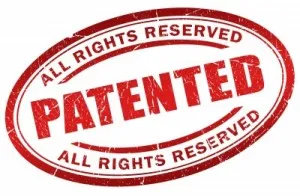Patent Protection - Tips and Tricks to do it right

A patent essentially relates to inventions in the field of science and technology.A patent is a set of exclusive legal rights granted by a state (national government) to the inventor or his assignee for a limited period of time until that invention can be made publicly known. A patent is a monopoly of sorts which allows a patent owner to carve his own niche in the marketplace by defining their 'new' territory. Specifically, the grant of a patent allows a patent owner to prevent others from making / using /selling the patented product / process within the jurisdiction in which the patent has been granted.
Some companies patent technologies with a business strategy of selling licenses of their inventions. People who do not purchase the license are then pursued as infringers and the company can sue them. This forms a part of an offensive strategy.
Some companies patent technologies with a strategy of merely creating a legal fence for around their technologies, in order to increase the culture of innovative research and development, and to capture market share based on innovative technologies. This also forms part of a defensive strategy.
Innovation may be a part of a company’s products, services, as well as business processes. All of these can be patented.
It is important that you do not disclose your idea to a business partner or a potential alliance without securing confidentiality clauses. If there is reason to believe that the idea is new and inventive, file for a provisional patent application. It is an effective form of securing global protection for a period of 12 months. Sign NDAs and confidentiality agreements before disclosing anything. In India, Patent Act, 1970 and the Patent Rules, 2003 are the two statutes the cover patent protection.
Here are some free tools to use for patents.
For Free Search
Patents are territorial. A patent applied for in India is only valid in India. A patent applied for in USA is only valid in USA. Hence, an inventor needs to apply in all markets where they plan to use the invention. This strategy (time-wise and cost-wise) needs to be defined. Always, read the claims and corresponding drawings to understand the real gist of the patent.
1) Search Portal, India:
http://ipindiaservices.gov.in/patentsearch/search/index.aspx
2) Search Portal, Global:
http://worldwide.espacenet.com/
3) Search Portal, WIPO:
4) Search Portal, USA:
5) Search Portal, Singapore:
http://www.epatents.gov.sg/PE/
6) Search Portal, Australia:
http://www.ipaustralia.gov.au/auspat/index.htm
Professional Help
A patent agent or a patent attorney is licensed to represent a client before the State (Patent Office and Offices of that state). For each invention to be granted a secure patent, a patent draft needs to be submitted to the Patent Office. This patent draft is a techno-legal description of the invention and is written in a language, colloquially referred to as ‘patentese’.
A patent agent or a patent attorney also helps with strategies of filing and prosecution. Always see to it that you seek help of only registered patent agents. Ask for it. Check if the person you are talking to is a registered Patent Agent, here:
http://ipindiaservices.gov.in/Agentregister/agentlisttest.aspx?AspxAutoDetectCookieSupport=1.
A patent agent is duty-bound by his / her license to respect confidentiality, and risks losing his / her license to practice if he / she were to misrepresent a client. A ‘consultant’ is not bound by any such legal obligations.
Secure Your Rights
In today’s world of cut-throat competition, innovation and innovative products and services form the defining cornerstone for a company’s sustainability. To increase market size and to capture the consumer’s attention by offering something new, something advanced, useful and fruitful.
These parameters form the key criteria for patents. A patent is granted on the following three counts:
- Novelty
- Inventive Step
- Industrial Applicability
Each country includes a list of non-patentable subject matter. What falls in the list for India is here.
How to determine infringement?
Always be on the lookout for similarities in the market. Gather evidence of dates of inception, use, continuous use, market size, market similarity, class similarity, goods and services. Conduct an online Search – Google it. Create news alerts.
Refer to the patent document that you own. Refer to its claims. Then step-wise, draw similarities between the claims and a competing product / service in order to ‘determine infringement’. If all the features or steps of claim 1 exist in the competing product / service, infringement is said to occur.
Symbols
Patent applied for (along with patent application number): when patent is applied for
Patented (along with patent registration number): when patent is granted.
Read how to protect your trademark. Also read our other article on IP here.
About the author

Chirag Tanna is a registered patent agent and Director at INK IDEE. INK IDEE is a leading Intellectual Property Rights' (IPR) boutique firm that manages all forms of IPR related queries, focusing specially on trademark and patents across various industries and sectors. INK IDEE also has a 'start-up' arm that diligently helps start-ups and entrepreneurs with IPR related advice and services, across the globe.You can reach Chirag Tanna for any IPR related questions on the website www.inkidee.com, or at [email protected].
LinkedIn Profile: Chirag Tanna











